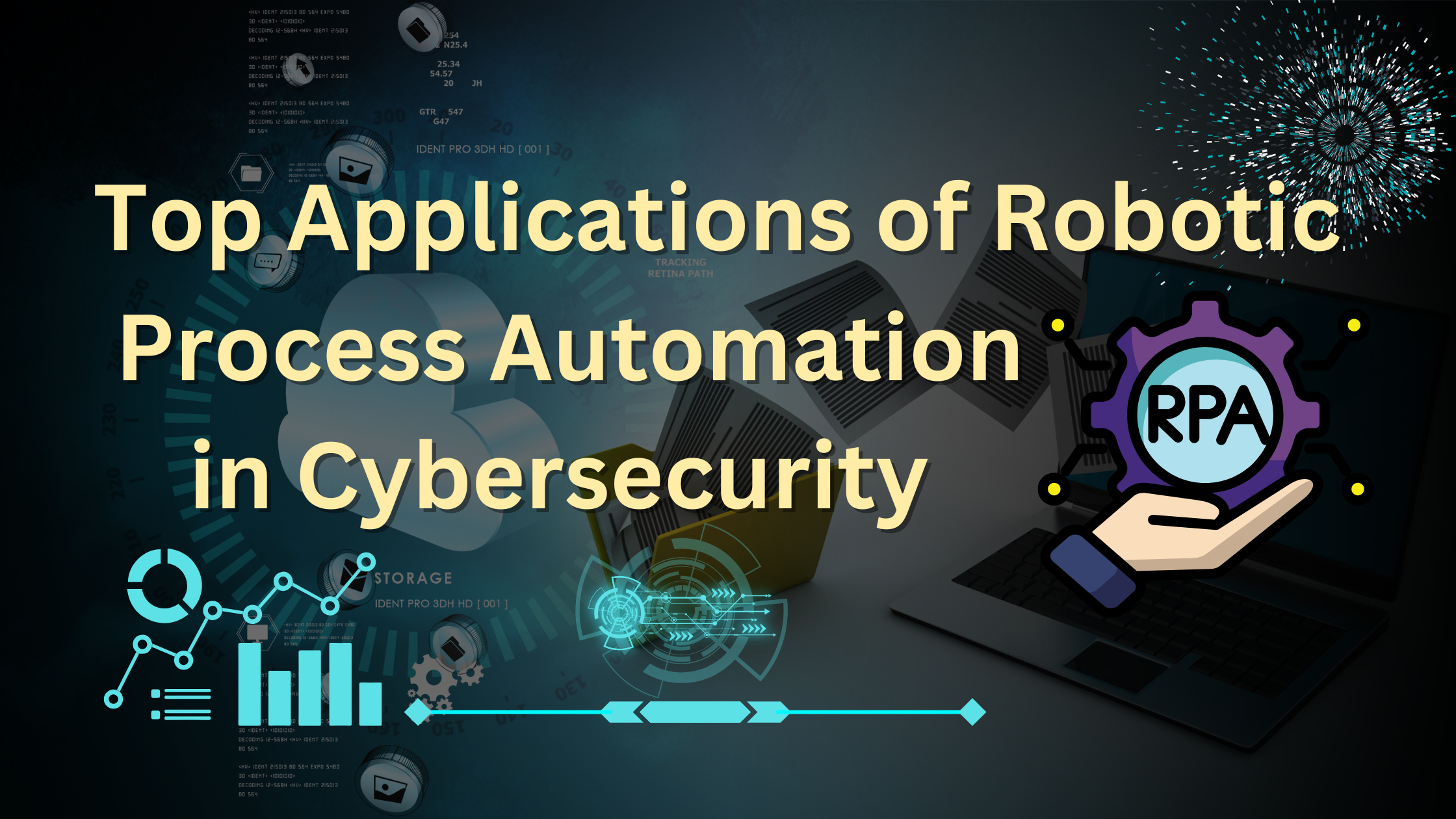Top Applications of Robotic Process Automation in Cybersecurity
The rapidly evolving threat landscape in cybersecurity demands innovative solutions to safeguard sensitive information and critical systems. Enter Robotic Process Automation (RPA)—a game-changer for automating repetitive tasks, enhancing efficiency, and reducing human error. In this blog, we’ll explore the top applications of RPA in cybersecurity and how it is transforming the industry.
1. Automated Threat Detection and Response
RPA bots can monitor networks 24/7 to identify potential security threats and initiate immediate responses. By automating this process, organizations can significantly reduce response times and minimize damage.
How It Works:
- Continuously scan system logs for anomalies.
- Integrate with security tools like SIEM (Security Information and Event Management) for real-time alerts.
- Trigger automated responses, such as isolating affected systems or blocking malicious IPs.
Benefits:
- Faster threat identification and mitigation.
- Reduced reliance on manual monitoring.
- Enhanced overall security posture.
2. Streamlined Incident Management
Incident management often involves multiple steps, from logging and prioritizing issues to escalating them to the right teams. RPA can automate these processes, ensuring a swift and organized response.
Key Capabilities:
- Automatically log incidents into ticketing systems.
- Assign priority levels based on predefined criteria.
- Notify relevant teams with detailed incident reports.
Why It Matters:
- Reduces the time spent on administrative tasks.
- Ensures no incidents are overlooked.
- Frees up security teams to focus on critical issues.
3. Vulnerability Management
Regular vulnerability assessments are essential for identifying and addressing security gaps. RPA can automate scanning processes and report generation, saving valuable time and resources.
Process Automation Includes:
- Scheduling periodic vulnerability scans.
- Analyzing scan results to identify critical issues.
- Generating and distributing detailed reports to stakeholders.
Advantages:
- Consistent and accurate assessments.
- Accelerated patch management processes.
- Improved compliance with regulatory standards.
4. User Access Management
Managing user access across an organization can be a tedious and error-prone task. RPA simplifies this process by automating account provisioning, de-provisioning, and permissions management.
Applications:
- Automatically create user accounts based on role requirements.
- Disable accounts for employees leaving the organization.
- Conduct periodic access reviews to ensure compliance.
Impact:
- Enhanced data security through precise access control.
- Reduced risk of insider threats.
- Streamlined user lifecycle management.
5. Phishing Prevention
Phishing attacks remain a significant threat to organizations. RPA bots can help identify and neutralize phishing attempts before they cause harm.
How RPA Helps:
- Monitor email traffic for suspicious activity.
- Flag or quarantine potential phishing emails.
- Educate users with automated phishing simulation campaigns.
Outcomes:
- Lower risk of successful phishing attacks.
- Better-trained employees who recognize phishing attempts.
- Increased overall organizational resilience.
6. Data Backup and Recovery
In the event of a cyberattack, having a robust data backup and recovery strategy is crucial. RPA can automate these processes, ensuring data integrity and availability.
Capabilities:
- Schedule regular data backups.
- Verify backup integrity through automated testing.
- Execute recovery procedures in case of data loss.
Benefits:
- Minimizes downtime during incidents.
- Ensures critical data is always protected.
- Reduces manual intervention in recovery processes.
7. Compliance Monitoring and Reporting
Staying compliant with cybersecurity regulations can be a daunting task. RPA can streamline compliance processes by automating monitoring and report generation.
Applications:
- Monitor systems for compliance with GDPR, CCPA, and other standards.
- Generate audit-ready reports on demand.
- Notify teams of non-compliance issues in real-time.
Value:
- Simplifies audit preparation.
- Reduces the risk of regulatory penalties.
- Builds trust with customers and stakeholders.
Conclusion
Robotic Process Automation is revolutionizing the way organizations approach cybersecurity. By automating repetitive tasks, enhancing efficiency, and reducing the margin for error, RPA empowers security teams to focus on strategic initiatives and respond to threats more effectively. As cyber threats grow in complexity, embracing RPA could be the key to staying ahead in the cybersecurity game.
Is your organization ready to leverage RPA for enhanced cybersecurity? Start exploring its potential today!


